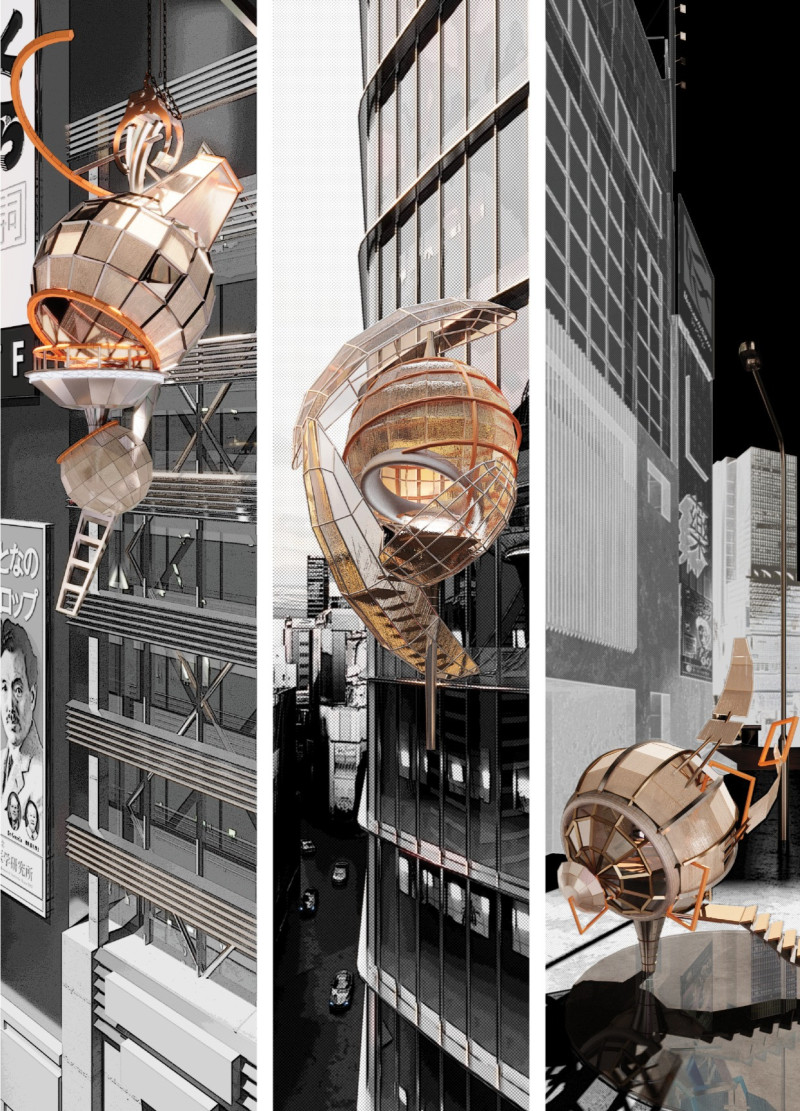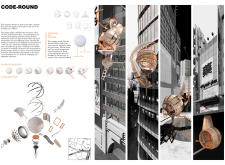5 key facts about this project
The structure features a dualistic design concept, consisting of an Internal Core and an External Skin. The Internal Core represents stability and permanence, creating a safe haven for users. In contrast, the External Skin allows adaptability, responding to environmental conditions and visually integrating with its surroundings. This dichotomy not only enhances the building's functionality but also reflects the contrasting nature of urban existence—serenity versus chaos.
The layout promotes a sequential journey through various spaces, designed to guide users from the bustling city into a contemplative atmosphere. The transition is marked by an emphasis on natural materials, including glass, wood, metal, and concrete. The use of glass enhances visibility and light penetration, while wood provides warmth and a tactile quality essential for a meditative setting. The metal framework ensures structural integrity, and concrete serves as a durable foundation.
Unique Design Approaches
A defining feature of CODE-ROUND is its kinetic architecture, exemplified by the adjustable External Skin. This dynamic element allows the building to respond to changing weather conditions, optimizing energy efficiency while enhancing user interaction. The design employs innovative techniques to create an ever-evolving relationship with the environment. The architectural forms, characterized by fluid and organic lines, not only contribute to visual aesthetics but also improve the spatial experience of the users.
Additionally, the integration of sustainable practices is a prominent aspect of the project. The selection of materials and the overall design consider the ecological impact, focusing on reducing the footprint while promoting environmental awareness. This commitment to sustainability aligns with contemporary architectural trends that prioritize ecological responsibility.
Spatial Dynamics and Functionality
The spatial organization within CODE-ROUND is carefully crafted to facilitate various forms of meditation practice. Design elements, such as defined meditation zones, communal gathering spaces, and private areas, allow users to engage with the environment according to their needs. Each part of the interior reflects a purpose, contributing to an overall atmosphere conducive to mindfulness and reflection.
In summary, CODE-ROUND stands as a thoughtful architectural response to urban challenges, offering a meditative refuge that prioritizes user experience and environmental sustainability. To gain further insights into the architectural plans, sections, and design concepts, readers are encouraged to explore the comprehensive presentation of this project.























